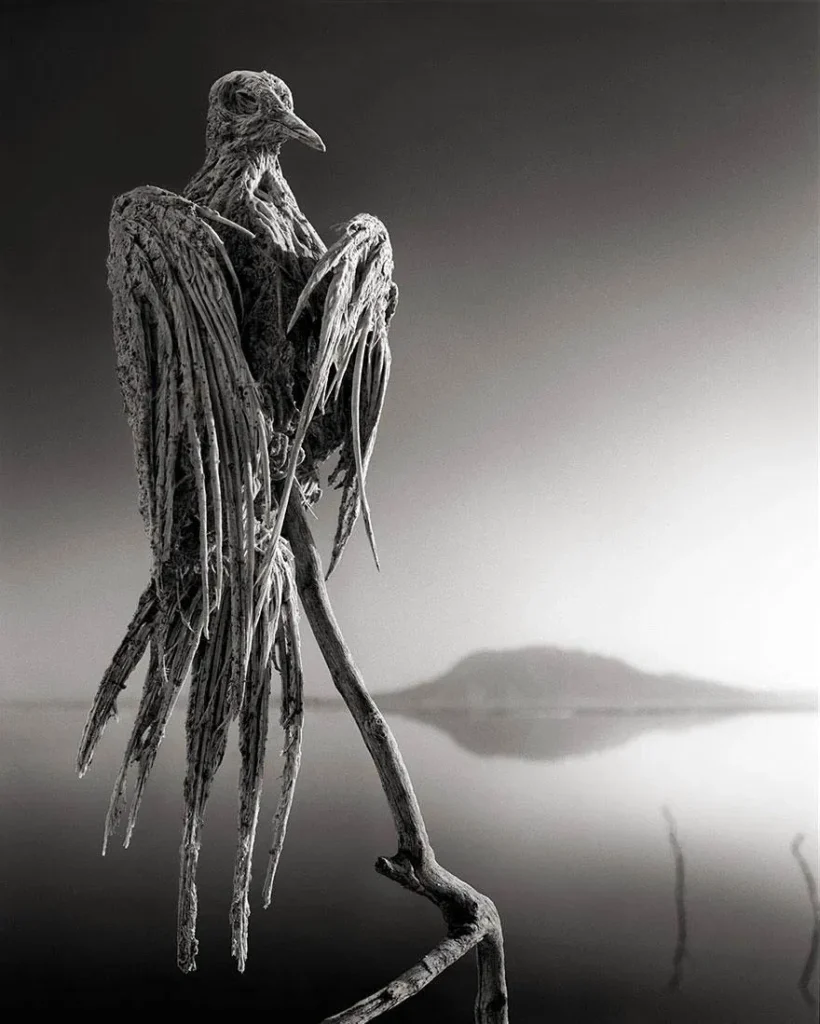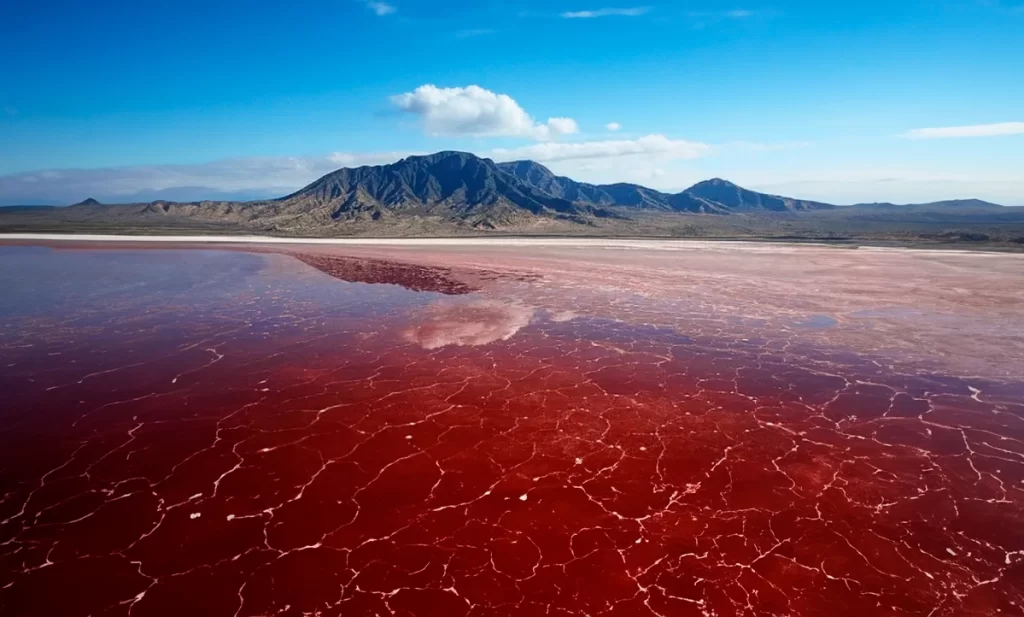In the heart of the Great Rift Valley, in northern Tanzania, lies one of the planet’s most surreal and extreme landscapes: Lake Natron. With its reddish waters, extreme alkalinity, and ability to “turn animals to stone,” this salt lake is a unique geological and biological phenomenon. It’s also a sanctuary for lesser flamingos, which find a safe haven here to breed.

An Extreme Environment
Lake Natron is an endorheic lake (with no outlet to the sea) located near the active volcano Ol Doinyo Lengai (“Mountain of God” in the Maasai language). Its waters have a pH between 9 and 12, making them one of the most caustic environments on Earth. This extreme alkalinity comes from high concentrations of sodium carbonate (natron) and other mineral salts, which leach from surrounding volcanic rocks and underground hot springs.
Water temperatures can exceed 60°C (140°F), and its deep red hue is caused by cyanobacteria, microorganisms that thrive in these harsh conditions. During the dry season, evaporation leaves behind white salt crusts, creating an almost alien landscape.
The Paradox of Life: A Flamingo Sanctuary
Despite its hostility, Lake Natron is a critical breeding ground for lesser flamingos, which account for 75% of the global population of this species. These birds have evolved to withstand the caustic waters thanks to their scaly legs and specialized beaks for filtering algae. The lake’s high salinity also acts as a natural barrier against predators, protecting their chicks.
Between June and October, thousands of flamingos gather to nest on small salt islands, creating a breathtaking spectacle. However, shifting rainfall patterns have made their presence less predictable in recent years.

The Petrification Mystery
One of Lake Natron’s most haunting features is its ability to preserve the bodies of animals that die in its waters. The high alkalinity calcifies tissues, making creatures appear like stone statues. This phenomenon was famously documented by photographer Nick Brandt, who captured striking images of “mummified” birds and bats along the shoreline.
While some animals may die after mistaking the lake’s reflective surface for the sky, others simply succumb to the extreme environment. Importantly, the lake doesn’t actively kill—the minerals act as natural preservatives after death.
Tourism and Conservation
Lake Natron is growing in popularity among travelers seeking off-the-beaten-path experiences. Activities include:
- Flamingo watching in their natural habitat.
- Hikes to Ol Doinyo Lengai, one of the world’s few carbonatite lava volcanoes.
- Cultural visits to Maasai villages to learn about local traditions.
- Treks to nearby waterfalls, like Engare Sero.
Despite its beauty, the lake faces threats from salt mining and potential industrial projects that could disrupt its fragile ecosystem. Conservation groups work to protect this unique site, which is not only vital for flamingos but also a natural laboratory for studying life in extreme conditions.para los flamencos, sino también un laboratorio natural para el estudio de la vida en condiciones extremas.

